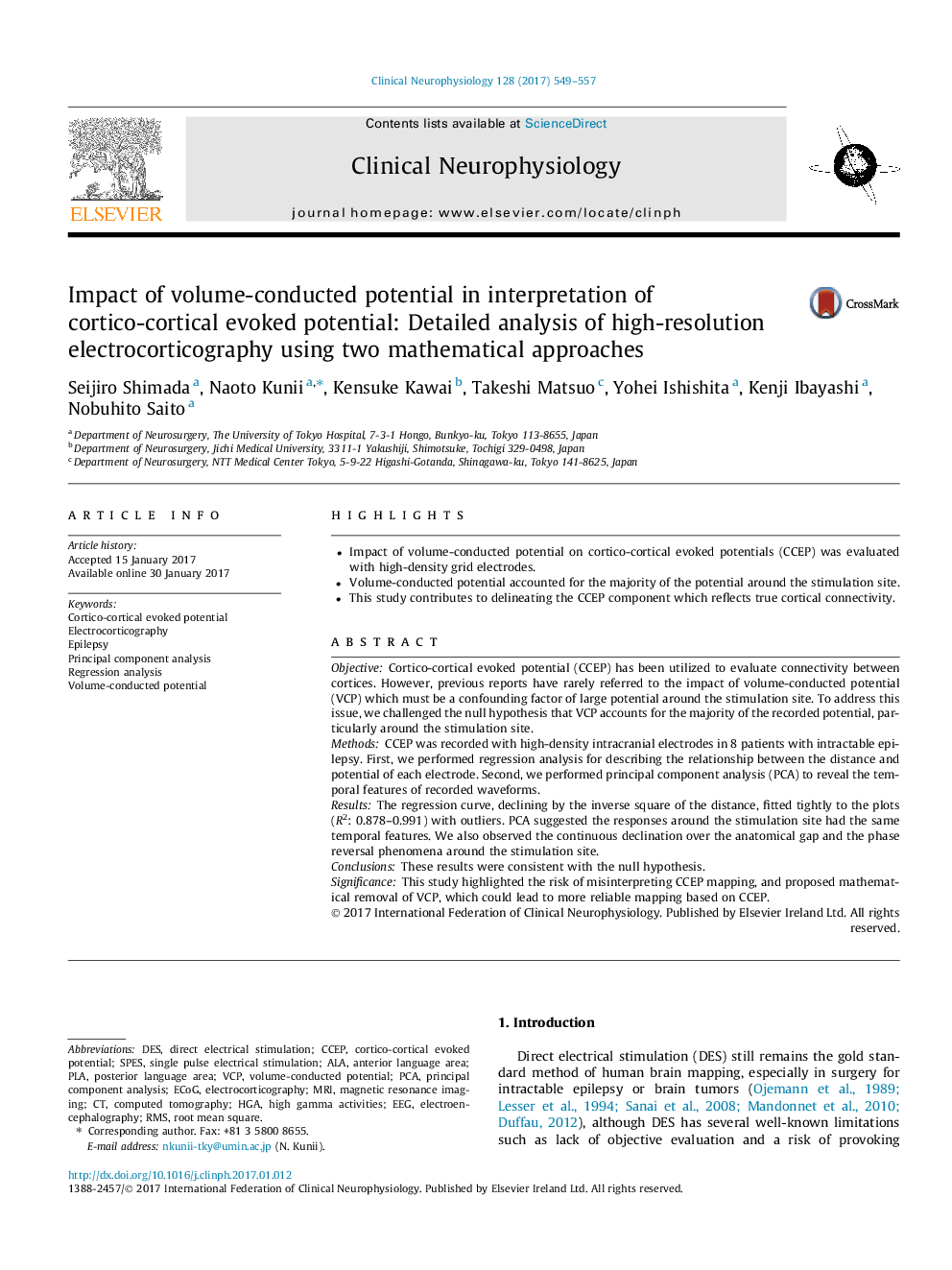| Article ID | Journal | Published Year | Pages | File Type |
|---|---|---|---|---|
| 5627652 | Clinical Neurophysiology | 2017 | 9 Pages |
â¢Impact of volume-conducted potential on cortico-cortical evoked potentials (CCEP) was evaluated with high-density grid electrodes.â¢Volume-conducted potential accounted for the majority of the potential around the stimulation site.â¢This study contributes to delineating the CCEP component which reflects true cortical connectivity.
ObjectiveCortico-cortical evoked potential (CCEP) has been utilized to evaluate connectivity between cortices. However, previous reports have rarely referred to the impact of volume-conducted potential (VCP) which must be a confounding factor of large potential around the stimulation site. To address this issue, we challenged the null hypothesis that VCP accounts for the majority of the recorded potential, particularly around the stimulation site.MethodsCCEP was recorded with high-density intracranial electrodes in 8 patients with intractable epilepsy. First, we performed regression analysis for describing the relationship between the distance and potential of each electrode. Second, we performed principal component analysis (PCA) to reveal the temporal features of recorded waveforms.ResultsThe regression curve, declining by the inverse square of the distance, fitted tightly to the plots (R2: 0.878-0.991) with outliers. PCA suggested the responses around the stimulation site had the same temporal features. We also observed the continuous declination over the anatomical gap and the phase reversal phenomena around the stimulation site.ConclusionsThese results were consistent with the null hypothesis.SignificanceThis study highlighted the risk of misinterpreting CCEP mapping, and proposed mathematical removal of VCP, which could lead to more reliable mapping based on CCEP.
